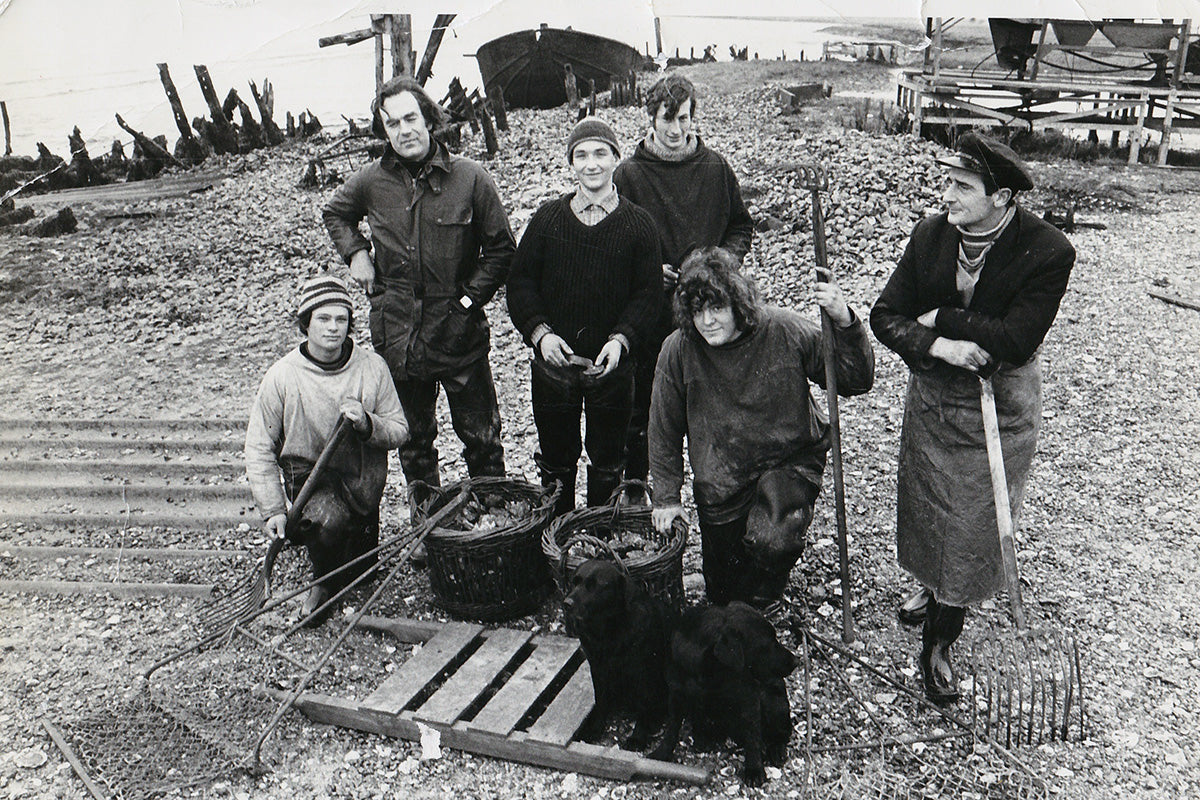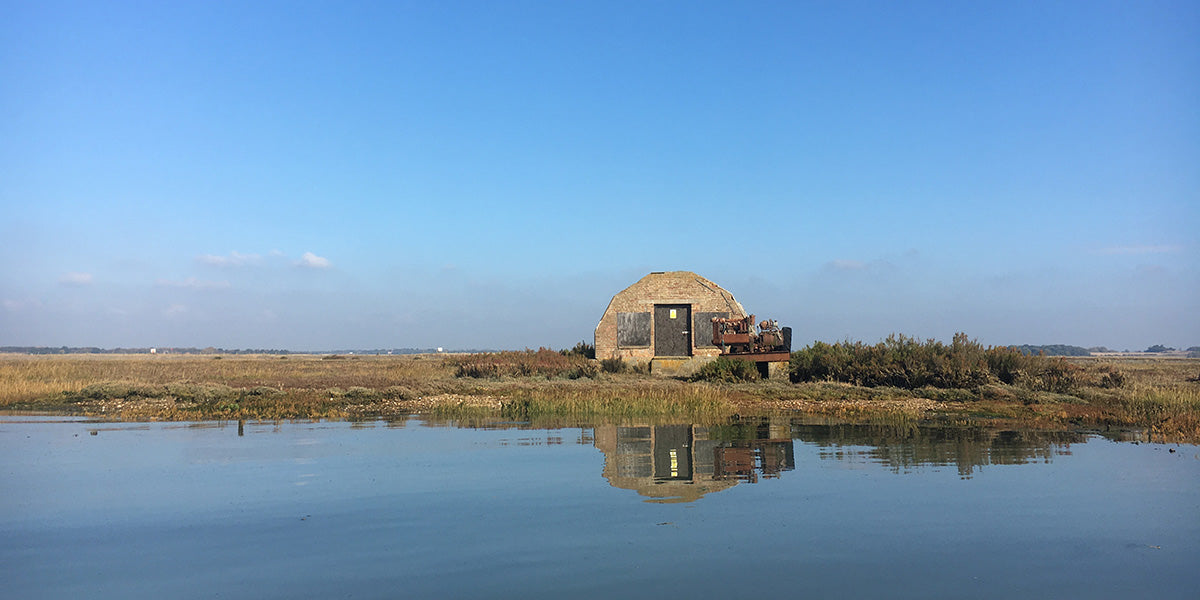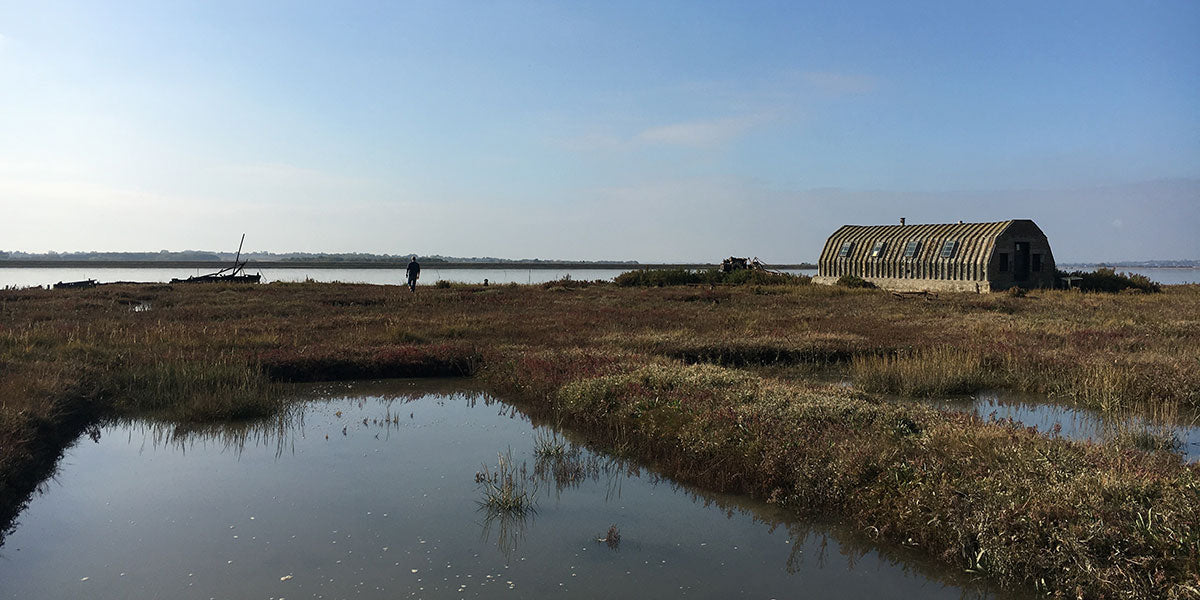The Fishery has been here in the Pyefleet in some form or another since Roman times when Colchester was called Camulodunum and was the capital of Roman Britain and Boudica was causing trouble for the Romans.
The Fishery is leased from Colchester Borough Council under a Royal Charter from Richard the Lion Heart that grants us the rights to the river Colne from the North Sea, the creeks and tributaries all the way into Colchester, this is our Fishery. We look after the same oyster beds that have been used for hundreds if not thousands of years. Carrying on the traditions of many oyster farmers before us and to look after the oysters for the generations that will follow on from us. In spite of all the technological advances the basic processes of growing oysters hasn't really changed that much. I doubt there are many other oyster farms that have the heritage that we do.
As you can see from the pictures below, everything used to be done by hand and sail. The boats are called oyster smacks, they are gaff rigged wooden boats between 30ft to 50ft in length. Dredges are thrown over the side of the boats and drag along the oyster beds collecting oysters. The nets attached to the dredge have large holes so that the smaller oysters go through the holes and back onto the oyster beds. There are still many oyster smacks on Mersea where they often race against each other and once a year we hold an oyster dredging match where the boats do what they were built to do. It's quite a sight to behold and highly competitive between the different boats!
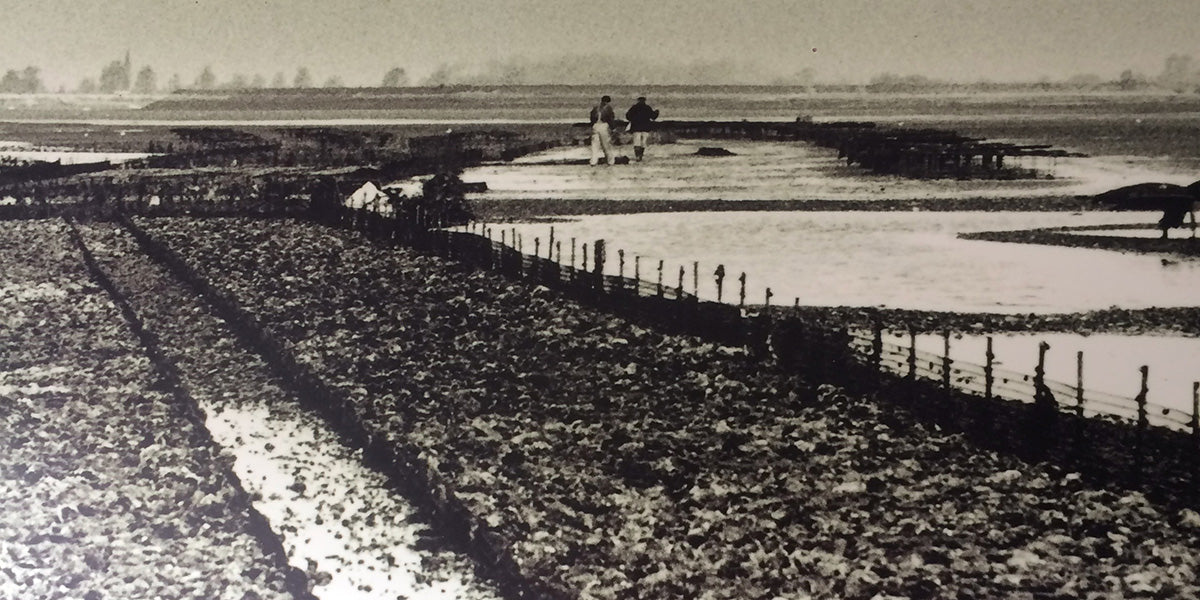

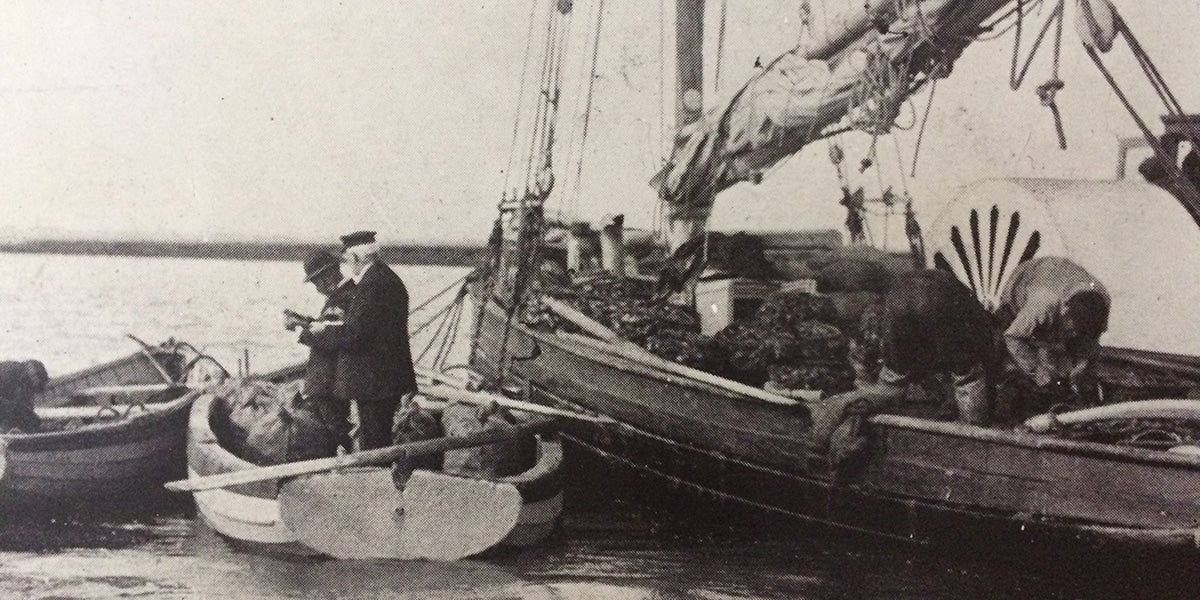
In 1965 Christopher Kerrison took over the lease, just after the hard winter of 1963 when the river froze and 90% of the oysters in the river died. At this time the main oyster grown was the native oyster and these take up to five years to reach market size, it was quite a gamble to take on the Fishery. Almost everyone else had given up on the river but with determination and a love of oysters, Mr Kerrison began transforming it into the Colchester Oyster Fishery we recognise today.
It hasn't always been plain sailing for the Fishery, we have lost nearly all of our oyster stocks twice, once to bonamia that decimated the native oysters, not only in our beds but across the English south coast and northern France and also to TBT which was an ingredient in antifoul on the bottom of boats to stop weed growing on them, but it also killed everything in the river! We have restocked the river with native oysters and with the faster growing Pacific rock oyster at great expense and courage.
When Mr Kerrison took over the lease the Fishery was a simple nissen hut on Pewit Island in the middle of Pyefleet Creek, where the workers had to get to and from the Fishery by boat from Brightlingsea whatever the weather. You can still see the remains of the oyster holding pits they are the rectangular and square shapes in the pictures below. Orders were sent to and from Pewit Island by carrier pigeon, yes, really they were. The oysters were graded and packed on the island before being taken to Brightlingsea by boat to be sent to London and onto Europe.
Whilst regenerating the oyster stocks in the river, Mr Kerrison decided to diversify and built the Fishery as it is today on Mersea Island. We were one of the first companies to begin to seriously import lobsters from Canada. The new fishery building was accessible by land which made logistics much easier and this is when the Fishery really started to become the company it is today.
